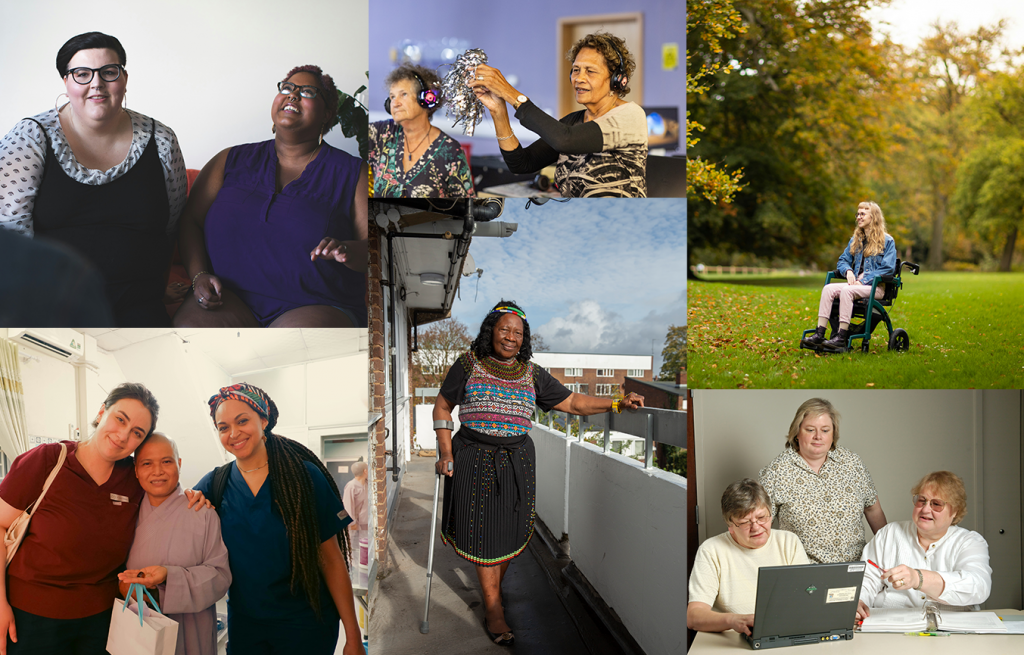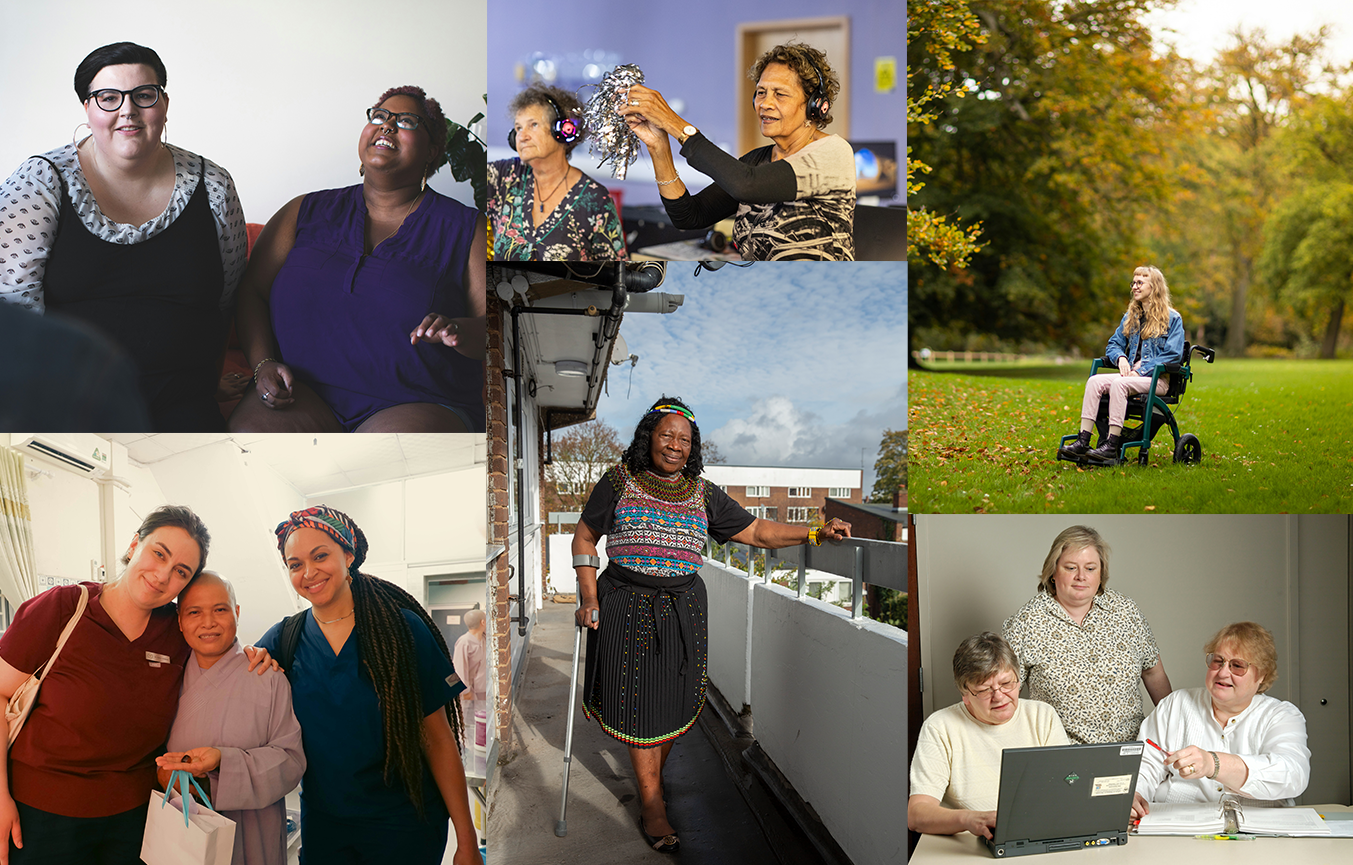by Sophie Wood
On International Women’s Day, 8 March 2025, it feels fitting to reflect on the inequalities faced by women with social care needs. This is by no means an exhaustive exploration; an entire book could be written on the subject. Rather, the aim is to spark conversation, encourage reflection, and inspire individuals to consider gender equality in their daily lives, professional practices, and the broader sector.
As a social care researcher, I have come to a disappointing realisation: the inequalities faced by women in social care remain largely overlooked and under-researched. Limited attention is given to how structural oppression—that is, the deeply embedded social, economic, and political systems that reinforce disadvantage—affects women’s access to services, experiences, and unmet needs. This gap is particularly stark for marginalized groups, including ethnic minority women (Greenwood et al., 2015), disabled women (Fawcett, 2016), LGBTQ+ women (Butler, 2017), and socio-economically disadvantaged women (Pinto & Haque, 2024). These overlapping forms of oppression intensify inequalities in care, leaving many women without the support they need.
Gender and Social Care: A Hidden Crisis
Gender inequality underpins nearly all major social work issues (Lauve-Moon et al., 2020), including elderly care, homelessness, addiction, violence, poverty, mental health, and disability. Despite this, gender equality remains on the periphery of mainstream social work priorities (Messing, 2020). While inequalities in access to, experience of, and research in health services has received relatively more attention, the social care sector possesses untapped potential to address these issues. Realising this potential requires placing the reduction of gender inequalities at the forefront of the social work sector’s priorities (Care England, 2023).
The UK Context: Systemic Gender Disparities in Social Care
In the UK, women face significant challenges in social care. Below I will list some examples, but these are by no means exhaustive.
Women bear the brunt of unpaid caregiving, providing 59% of unpaid care—a burden that impacts their financial security and overall well-being (ONS, 2023). Disabled women face heightened risks of poverty, social exclusion, and violence (Waters, 2018). Social security cuts have disproportionately affected women, particularly older women with unmet care needs (Women’s Budget Group, 2019; NHS England, 2019). Neurodiverse women are often diagnosed later in life compared to men, largely due to diagnostic criteria and research that are male-centric (Young et al., 2020). These delays in diagnosis and support contribute to the significant burden of co-occurring conditions that many neurodivergent women face, further complicating their interactions with social care services (Kelly et al., 2024).
Dementia is the leading cause of death for women, yet gender differences in care remain largely ignored (Alzheimer’s Research UK, 2022). Meanwhile, women are 2.48 times more likely to be diagnosed with depression or anxiety and are prescribed psychotropic drugs at higher rates, raising concerns about potential over-medicalisation (Bacigalupe et al., 2021).
From 2001 to 2022, alcohol-specific deaths among women in England rose by 73%, surpassing the increase among men of 59% for the same period (Stiebahl, 2024). Homelessness among women in the UK surged by 22% between 2022 and 2023, with many experiencing hidden homelessness and resorting to risky behaviours to secure shelter (ONS, 2024). Concerningly, violence against women increased by 37% between 2018 and 2023 (NPCC and College of Policing, 2024), while the women’s prison population is projected to rise by 16% by 2027, largely due to non-violent offences (Ministry of Justice, 2024).
I am sure those reading this could think of many more inequalities faced by women with social care needs, either from their own experiences or from that of others. A mapping exercise is needed to understand where we know inequalities exist and what might help to alleviate these, followed by empirical research to address these gaps.
The Need for Intersectionality in Social Care Research
Intersectionality is the way different aspects of a person’s identity—such as gender, ethnicity, disability, and sexuality—overlap to create unique experiences of discrimination and privilege. It is crucial for understanding and addressing inequalities in social care, yet it is often overlooked in research. A review of feminist methodologies in social work found that there is a lack of focus on women who face multiple layers of oppression, including ethnic minority women, LGBTQ+ women, and disabled women (Lauve-Moon et al., 2020). These inequalities are not just personal struggles but are deeply embedded in social systems and therefore should be a key concern for social workers (Bywaters, 2009).
Moving Forward: Prioritising Gender Equity in Social Care
Addressing gender inequalities in social care requires a shift in research priorities, policy approaches, and frontline practices. Social care must adopt a more intersectional framework, recognising and responding to the compounded challenges faced by women across different backgrounds. By integrating gender-focused research and interventions, the sector can begin to bridge the gap in care and create more equitable support systems for all women.
Without this shift, social care will continue to fail the very people it is meant to serve—women who, despite their crucial role in caregiving, remain among the most underserved and overlooked in the system.

References
Alzheimer’s Research UK. (2022). The impact of dementia on women. https://www.alzheimersresearchuk.org/about-us/our-influence/policy-work/reports/the-impact-of-dementia-on-women/
Bacigalupe, A., & Martín, U. (2021). Gender inequalities in depression/anxiety and the consumption of psychotropic drugs: Are we medicalising women’s mental health? Scandinavian Journal of Public Health, 49(3), 317-324.
Butler, S. S. (2017). Home care experiences of older lesbians: A national qualitative study. Innovation in Aging, 1, 395.
Bywaters, P. (2009). Tackling inequalities in health: A global challenge for social work. The British Journal of Social Work, 39(2), 353–367.
Care England. (2023). Bridging the gap: Tackling inequalities in England’s social care sector and beyond. https://www.careengland.org.uk/bridging-the-gap-tackling-inequalities-in-englands-social-care-sector-and-beyond/
Fawcett, B. (2023). Feminisms in social work and social care. International Social Work, 66(3), 831-841.
Greenwood, N., et al. (2015). Barriers to access and minority ethnic carers’ satisfaction with social care services. Health & Social Care in the Community, 23, 64-78.
Kelly, C., et al. (2024). Recognising and responding to physical and mental health issues in neurodivergent girls and women. British Journal of Hospital Medicine, 85(4), 1–12.
Lauve-Moon, K. R., et al. (2020). Mainstreaming gender: Feminist methodology in social work research. Social Work, 65(4), 317-324.
Messing, J. T. (2020). Mainstreaming gender: An intersectional feminist approach. Social Work, 65(4), 313-315.
Ministry of Justice. (2024). Prison population projections 2023 to 2028, England and Wales. https://assets.publishing.service.gov.uk/media/65df5123b8da630f42c86271/Prison_Population_Projections_2023_to_2028.pdf
NHS England. (2019). Health survey for England 2018 summary report. https://digital.nhs.uk/data-and-information/publications/statistical/health-survey-for-england/2018/summary
National Police Chiefs’ Council (NPCC) & College of Policing. (2024). Violence against women and girls (VAWG) national policing statement 2024. https://news.npcc.police.uk/resources/vteb9-ec4cx-7xgru-wufru-5vvo6
Office for National Statistics (ONS). (2023). Unpaid care by age, sex, and deprivation, England and Wales: Census 2021. https://www.ons.gov.uk/peoplepopulationandcommunity/healthandsocialcare/socialcare/articles/unpaidcarebyagesexanddeprivationenglandandwales/census2021
Office for National Statistics (ONS). (2024). Rough sleeping snapshot in England: Autumn 2023. https://www.gov.uk/government/statistics/rough-sleeping-snapshot-in-england-autumn-2023/rough-sleeping-snapshot-in-england-autumn-2023
Pinto, I., & Haque, Z. (2024). Who bears the brunt? Intersectional analysis of social security cuts. Women’s Budget Group. https://www.wbg.org.uk/publication/who-bears-the-brunt-intersectional-analysis-of-social-security-cuts-since-2010/
Stiebahl, S. (2024) Alcohol statistics: England. https://researchbriefings.files.parliament.uk/documents/CBP-7626/CBP-7626.pdf
Waters, C. (2018). The ‘double whammy’ of being a disabled woman in the UK. Equality and Human Rights Commission (EHRC). https://www.equalityhumanrights.com/media-centre/blogs/double-whammy-being-disabled-woman-uk
Women’s Budget Group. (2019). Social security and women. https://wbg.org.uk/wp-content/uploads/2019/11/SOCIAL-SECURITY-2019.pdf
Young, S., et al. (2020). Females with ADHD: An expert consensus statement taking a lifespan approach providing guidance for the identification and treatment of attention-deficit/hyperactivity disorder in girls and women. BMC Psychiatry, 20, 404.

